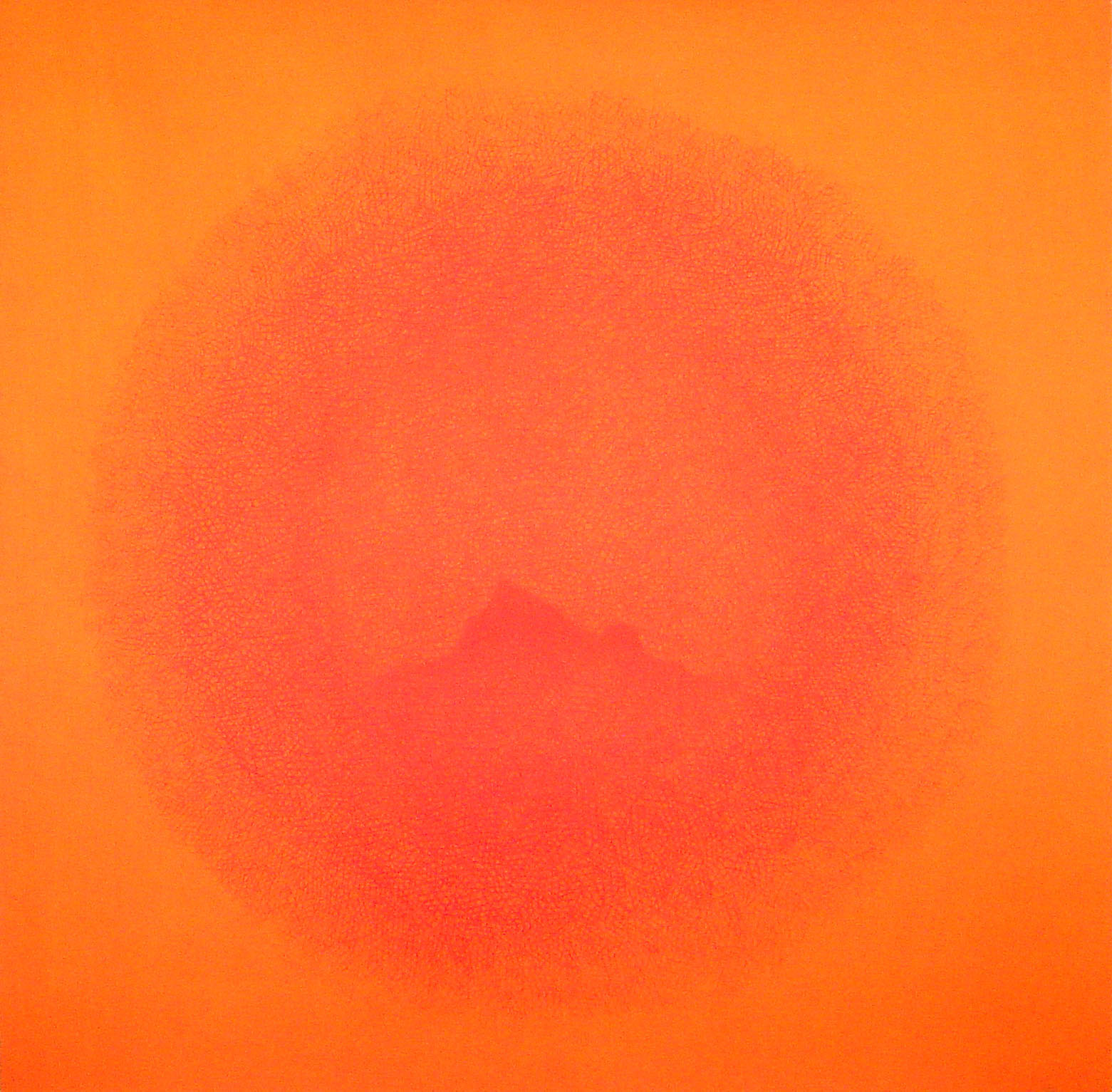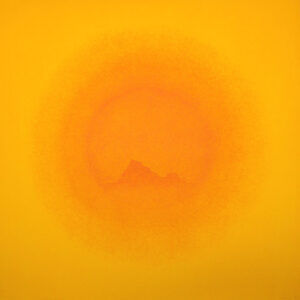Description
Paul Brach – Corona II 1995 is in the following COLLECTIONS:
- Helix Architecture and Design
- Mader & Shannon Wealth Management
- Nelson-Atkins Museum of Art
- Spencer Museum of Art (1997.0067)
—————————–
“In the Corona series, I find myself returning to the circle in a square format that I used in the early and mid-sixties. The spatially ambiguous blue-green color of the earlier works was left behind when I moved into the white light of Southern California. Now concentric zones of saturated color radiate out from the diffuse mountain forms, or conversely, draw in from outer circle to coalesce into the central image.”
– Paul Brach –
—————————–
Resources:
Paul Brach: A Visionary of Abstract Expressionism
Paul Brach, an American artist born in 1924, emerged as a pivotal figure in the realm of Abstract Expressionism during the mid-20th century. His contributions to the movement, characterized by its emphasis on spontaneity, emotion, and gestural brushwork, left an indelible mark on the art world. Brach’s innovative approach to abstraction, coupled with his profound understanding of color, form, and texture, propelled him to the forefront of the New York art scene, where he became renowned for his bold experimentation and unwavering dedication to his craft.
Born in New York City, Brach’s early exposure to the city’s vibrant artistic milieu laid the foundation for his artistic journey. He studied at the Art Students League of New York, where he honed his skills under the tutelage of renowned artists such as Hans Hofmann and Vaclav Vytlacil. These formative years instilled in Brach a deep appreciation for the expressive potential of abstract art and provided him with the technical prowess to navigate its complexities.
Brach’s artistic oeuvre is characterized by a relentless pursuit of innovation and self-expression. His paintings, often large in scale, are imbued with a sense of dynamism and vitality that captivates the viewer’s imagination. Through bold brushstrokes and vibrant hues, Brach created compositions that pulsate with energy, inviting the viewer into a world of visceral experience and raw emotion.
One of Brach’s most notable contributions to Abstract Expressionism lies in his exploration of texture and surface. He experimented with various materials and techniques, including impasto and collage, to create multi-dimensional works that transcend the boundaries of traditional painting. His use of unconventional materials, such as sand and tar, added depth and tactility to his compositions, inviting the viewer to engage with the artwork on a sensory level.
Furthermore, Brach’s artistic vision was deeply rooted in his spiritual and philosophical beliefs. Influenced by Eastern mysticism and existential philosophy, he sought to transcend the confines of the material world and tap into the universal essence of being. This quest for transcendence is evident in his ethereal landscapes and abstract forms, which evoke a sense of timelessness and spiritual resonance.
Despite his contributions to the art world, Brach’s legacy remains somewhat overshadowed by his contemporaries, such as Jackson Pollock and Willem de Kooning. However, his impact on Abstract Expressionism cannot be overstated. His daring experimentation and uncompromising commitment to artistic expression paved the way for future generations of artists to push the boundaries of abstraction and redefine the possibilities of painting.
In conclusion, Paul Brach stands as a visionary figure in the history of Abstract Expressionism. His innovative approach to abstraction, coupled with his profound understanding of color, form, and texture, elevated him to prominence within the New York art scene. Through his bold experimentation and unwavering dedication to his craft, Brach left an indelible mark on the art world, inspiring generations of artists to explore the boundless potential of abstract painting.
Author: The Lawrence Lithography Workshop
Date: February 16 2024
Title: Paul Brach: A Visionary of Abstract Expressionism
URL: http://lawrencelitho.com/product/brach-paul-corona-i-1995/


